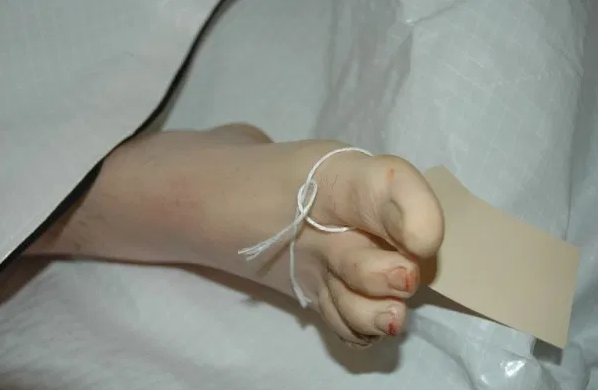
|
|
|
|
Going to extraordinary lengths to identify the dead is routine practice among forensic anthropologists. Let's look at the professional standards.
In 1978 serial murderer John Wayne Gacy confessed to murdering over 30 people and burying many of them under the crawlspace in his Des Plaines, Illinois house. He dumped others into a lake and a river.
The Cook County Medical Examiner Robert Stein said the crawlspace under the house would have to be excavated with the same care given to an archaeological dig.
"We are going to have my anthropologist over to examine all the evidence that may come up. It's camel-hair brushwork for sure." (Joyce & Stover, pgs. 106-07).
Gacy would not tell the police the name of his victims, so families all over the country with missing boys sent in dental records to the Cook County medical examiner, who compared those records with the jaws and teeth of the exhumed corpses. Some of the victims were identified promptly.
Forensic anthropologist Clyde Snow was called in to identify 14 bodies which could still not be identified despite several months of investigation. Because Gacy had buried some of his victims on top of each other, Snow had to make sure that the bones from different bodies had not been mixed up by the excavation crew.
"He drew up charts listing thirty-five characteristics of the skull alone for each of the fourteen bodies. Like a ballistics expert looking for grooves on a bullet to trace the gun barrel from which it came, Snow compared every characteristic of each skeleton to the photographs, descriptions, and the few x-rays of missing boys that had trickled in … Whenever a promising clue turned up, Snow would climb aboard a plane in Oklahoma City and return to Chicago, to the windowless basement of the morgue where he and another colleague compared the new information to the bone sets they had set up." (Joyce & Stover, pg. 109).
Snow also asked artist Betty Gatliff to do facial reconstruction on the skulls of the unidentified skeletons. Over the years anatomists and forensic scientists had taken measurements of the thickness of the facial muscle and skin covering the skull and facial bones. These thicknesses are consistent from person to person. The face fits the skull like a glove. Using these tables and the skull for which an identity was sought, the artist sculpted a face on the skulls (Joyce & Stover, pgs. 113-19)
The Smithsonian Institution and the FBI do these facial reproductions via computer now, according to Dr. Ubelaker (Ubelaker, pgs. 173-74). The computer captures images of the skull and mandible and digitizes them. The computer operator can then select appropriate nose, ears, mouth, etc. and manipulate the features. The technique was used to reproduce the face of the partially skeletonized head of a severely decomposed woman found beside a North Carolina highway in 1990.
Another method used to identify the dead is photographic superimposition, which has now become highly refined with computers. As in the technique of facial reproduction, tables of the thicknesses of facial muscle and skin are consulted. A photograph of the missing person is superimposed over an image of the skull to see if a match exists between the two (Ubelaker, pg. 181).
Later on, we shall compare the standards used by these professionals to identify corpses with the efforts taken to identify the deceased Branch Davidians.